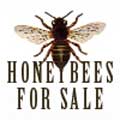Norfolk Honey - beehives
Beehives
The selection of beehives on offer to the modern bee keeper includes
those using several different systems of beekeeping. There is a large
variety of hives that offer a variation on Langstroth's
original patented moveable frame hive and they come in a variety
of shapes and sizes. There are all movable frame hives (see Wikipedia
on beehives) This link is to a page that lists over
300 hive designs
There is also a movement advocating the use of top
bar
hives
that maintain the mainstream process of movable frames is undesirable and
stressful to the bees when regular inspections are made.
Some of the hives in general use today
Langstroth
Larger than the British Standard
the Langstroth is more widely used in the USA and Canada than in the OK.
I do have some bees on Langstroth frames and next year (2012) intend to
move
more onto Langstroth and offer nucs on Langstroth frames.
WBC
The traditional WBC Victorian hive often used in illustrations is still very
popular. Mainly, I believe, because of it's looks. However, it does take
the same
sized frame as British National Hive. The brood box is smaller
than the British National (it takes one frame less). WBC hives are slower
to use
than
the other box hives but if you are keeping just three or four hives in your
orchard or garden then they do look the part. If you want to keep a number
of hives then moving the lifts on and off will become very tedious.
British National
The British National hive is designed to standardize hive dimensions and has
a British Standard set of dimensions - see
pdf (none
of the old WBC hives are the same as the next and the suppers from one old
WBC are likely not to fit on another) Dave
Cushman has pages on all of the British National hive parts - click
here Read Dave's take on 'cold
or warm way' It seems that there isn't much in bee keeping that Dave hasn't
written on - see his
index. BUY quality cedar National Hives made up and delivered
to your door - click
here
Commercial The commercial hive is again a bigger box than
the national hive. I have one Commercial hive and plan to increase my stock
of commercial hives as I do find that some of my bees seem to like a bigger
brood box.
Smiths The smiths hive is smaller than the National hive. The
frames have shorter lugs. In order to put the frames from a National hive
into a Smiths hive the ends of the lugs need to be cut down.
Warre For 'natural beekeeping' - external link click
here I don't keep any Warre hives myself - but if you want bees in a Warre
box my associate does offer them and we can buy the Warre hive for you and
supply it with a starter colony of bees in one of the boxes. The price of the
hive is £265 and the bees £165 (2012 prices)
Dartington Another box system and another size. I have no
Dartington hives
Dadant
The beehive of Frenchman Charles Dadant (based on Langstroth) - link The
modified Dadant is the largest hive you can get - link
Beehaus Is a new plastic hive design from Omlet
Rose hive The Rose hive is part of the Rose method of bee
keeping. Essentially it is still a box system but the boxes are all the same
size. To read more buy the book - click
here I have no Rose hives.
Polystyrene I'm told that bee keepers on the continent are
keen on Polystyrene hives. I have been using polystyrene nuc boxes and I must
say that the bees seem to like them. I will try out some polystyrene myself
next season (2012)
Top bar hives (see Wikipedia
on Top bar hives)
I don't keep any Top Bar Hives myself - but if you want bees in a Top bar
nuc box my associate does offer a limited supply of them.
Plastic hives - The Apimaye Thermo Hive I
know very little about these hives other than what I have read and explanation
from the one beekeeper I know who has chosen to use them. One of their main
strengths is the way they lock together and can easily be moved. They are
a complete system in themselves and not designed to mix and match with traditional
wooden boxes. If you are planning to keep a number of hives and are yet to
start from scratch then this is a system you could consider. The internal
sizes are that of the Langstroth - Apimaye
Thermo Hive link.
If you haven't already started beekeeping then how you choose a beehive
that is right for you is hard to say.
I guess it depends on what kind of beekeeper you want to become. Commercial
bee keepers seem to like large brood boxes. But beware if you are going
to be a 'retired' beekeeper as large boxes are heavy. The Standard National
hive is probably the most popular hive - but do you choose traditional cedar
hives or the newer polystyrene?
If you are more concerned about the bees than making honey you may be persuaded
that a top bar is best for you. Again there are several popular
designs to choose from. Ken tells me his 'natual' Warre hives over winter
well. However, many of the 'natural' principles can easily be practiced
used traditional standard equipment if you wish.
If you are looking for a second hand hive with bees in click here
If you have
questions and would like to email
me please do.

